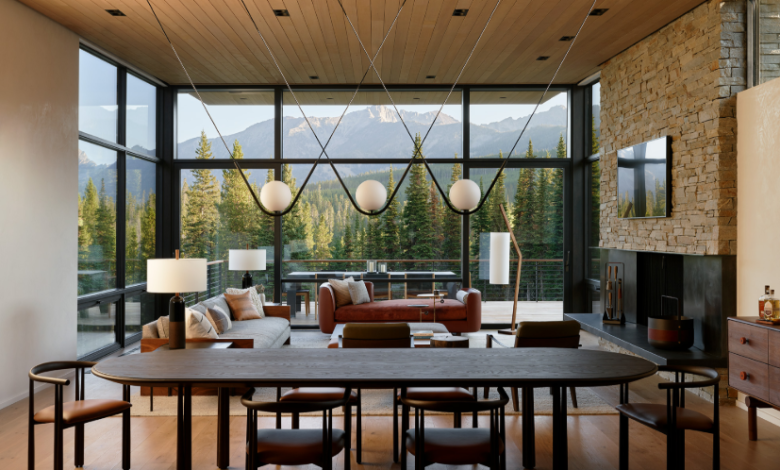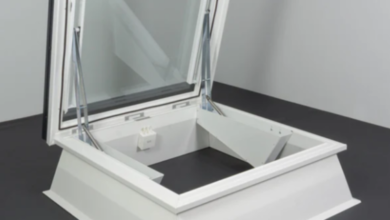The Architect’s Guide to Curtain Walls and Window Walls

MANNLEE is a leading provider of architectural glass systems, specializing in curtain walls, glass railings, and partitions tailored for both commercial and residential projects. As building designs increasingly emphasize aesthetics, natural light, and energy efficiency, understanding the distinctions between Curtain wall vs window wall becomes crucial for architects, builders, and property owners. This article delves into these two popular glass façade systems, explaining their features, benefits, and best use cases to help in making informed decisions.
What Is a Curtain Wall?
A curtain wall is a non-structural outer covering of a building, typically composed of glass, metal framing, and sometimes stone or other materials. Unlike traditional walls, curtain walls do not bear any structural load from the building other than their own weight. They are designed to resist air and water infiltration, withstand wind forces, and transfer those loads back to the building’s structural frame.
Curtain walls create a continuous glass façade that can span multiple floors, allowing for a sleek, modern aesthetic with maximum daylight penetration. They are commonly used in high-rise commercial buildings, office towers, and skyscrapers due to their flexibility in design and ability to handle large-scale applications.
How Does a Window Wall Differ?
Window walls, on the other hand, are installed between floor slabs, essentially forming large window openings within the structural frame of a building. Unlike curtain walls, which hang on the exterior of the building frame, window walls fit into the window openings created by the slabs, creating a cladding element that is often flush with the exterior walls.
Window walls also consist of glass and aluminum framing but are typically installed in a unitized fashion, allowing multiple prefabricated panels to be put in place quickly. They provide a balance of natural light, thermal performance, and weather resistance, making them suitable for mid-rise buildings and residential complexes where cost efficiency and installation speed are important.
Key Differences Between Curtain Wall and Window Wall
Understanding the functional and structural differences between curtain walls and window walls is vital. While both use glass extensively and enhance natural lighting, they vary widely in construction, performance, and cost.
- Structural Attachment: Curtain walls are hung on the building from floor to floor and transfer loads to the structural frame, while window walls fit within the floor slabs and are supported primarily by these slabs.
- Installation: Curtain walls typically require a more complex installation process as they involve continuous glazing and framing across multiple floors. Window walls are unitized and installed floor-by-floor, often resulting in faster completion times.
- Design Flexibility: Curtain walls offer greater design freedom, including curved façades, different glass types, and integration with other cladding materials. Window walls are limited to the dimensions between slabs and usually have simpler configurations.
- Cost: Generally, window walls can be more cost-effective, especially for residential or mid-rise projects, due to simpler installation and framing requirements. Curtain walls, while more expensive, offer superior aesthetic and performance benefits for large-scale buildings.
See also: Smart Home Integration with Modern Builders & Construction Techniques
Benefits of Curtain Walls in Commercial Projects
Curtain walls are preferred in commercial architecture because of their ability to create striking visual impressions and maximize views. Their continuous glass structure allows for expansive daylighting, reducing the need for artificial lighting and enhancing occupant comfort.
Additionally, curtain walls can incorporate high-performance glazing options that improve thermal insulation, solar control, and noise reduction, which are critical in urban environments. With the ability to integrate shading devices and operable vents, curtain walls can contribute to energy-efficient building designs.
The structural independence of curtain walls also means the primary building frame can be optimized for load-bearing without the constraints of having to support heavy wall elements, allowing for lighter and more economical buildings.
How Window Walls Support Residential and Mid-Rise Buildings
In residential and mid-rise buildings, window walls offer a practical solution that balances cost, speed, and functionality. Their installation between floor slabs simplifies construction sequencing, enabling faster project delivery.
Window walls provide ample natural light and ventilation options, which are highly valued in residential settings. They also tend to have better thermal breaks and insulation options, ensuring comfortable indoor temperatures and energy savings.
Because window wall systems are unitized and smaller in scale, they can be replaced or repaired more easily than large curtain wall segments. This adds to the long-term maintenance advantages favored in residential projects.
Choosing the Right Glass Façade System: Factors to Consider
When deciding between curtain wall and window wall systems, several factors should be evaluated, including building height, budget, architectural goals, and performance requirements.
Building Height: Curtain walls are ideal for high-rises and commercial towers where continuous glass façades are desired. Window walls suit low to mid-rise residential or office buildings.
Aesthetic Preferences: Curtain walls offer a sleek, uninterrupted glass appearance and are suitable for complex designs. Window walls typically have vertical mullions aligned with floor slabs, giving a distinct segmented look.
Energy Efficiency: Both systems can incorporate high-performance glazing, but curtain walls often support more versatile energy-saving features, like integrated shading.
Construction Timeline: Window walls’ modular installation often translates into shorter build times, which might be critical for budget-sensitive projects.
Cost Implications: Window walls generally have lower upfront costs, but curtain walls might offer better long-term value in terms of energy savings and building image.
MANNLEE’s Expertise in Curtain Walls and Glass Systems
MANNLEE delivers expert solutions for curtain walls, glass railings, and partitions, tailoring each system to project-specific needs. Leveraging advanced materials and engineering expertise, MANNLEE ensures that every façade meets stringent standards for quality, safety, and aesthetics.
For commercial projects looking for expansive glass façades with superior performance, MANNLEE’s curtain wall systems combine robust structures with elegant designs. In residential or mixed-use developments, their window wall solutions offer cost-effective, durable, and visually appealing outcomes.
Their comprehensive approach includes consultation, design customization, fabrication, and installation, making them a trusted partner for modern architectural glass needs.
Conclusion
Choosing between a curtain wall and a window wall depends on multiple factors, including building type, functionality, design ambitions, and budget. While curtain walls stand out for their grandeur and flexibility in large commercial buildings, window walls provide efficient, cost-effective options for residential and mid-rise projects.





